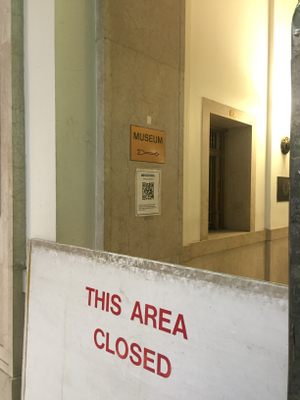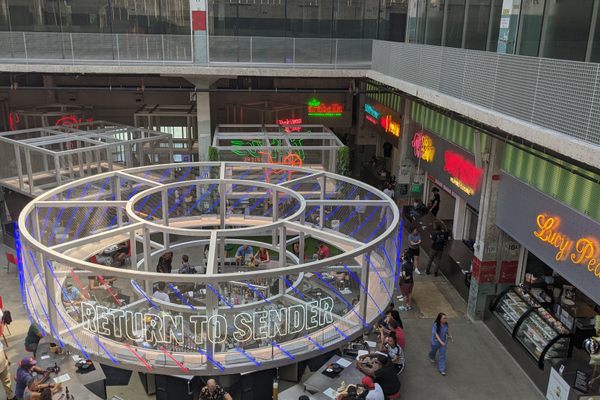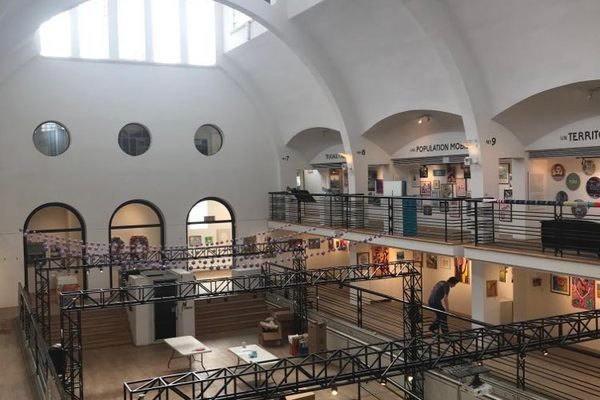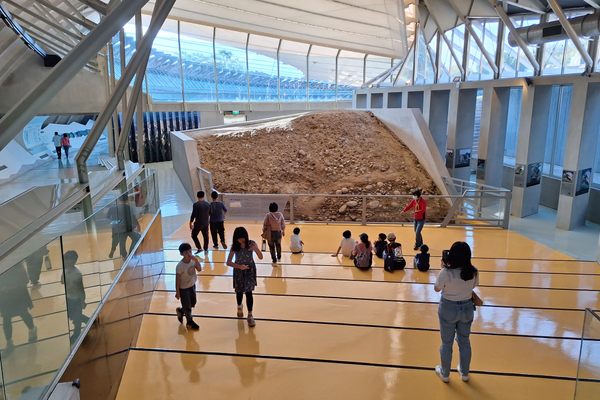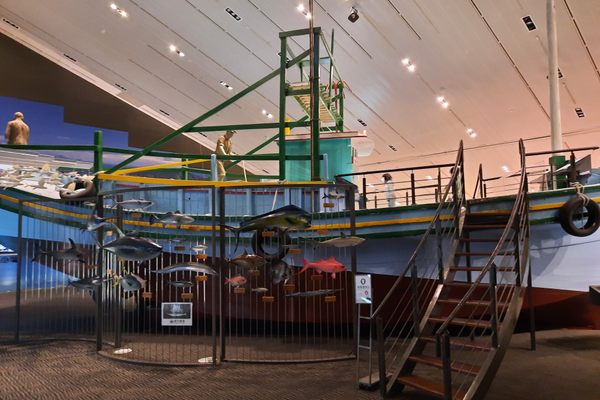About
Squashed between Madison Square Garden and Penn Station, the James Farley Post Office was built in 1912, and is proudly inscribed with the unofficial creed of the United States Postal Service: Neither snow nor rain nor heat nor gloom of night stays these couriers from the swift completion of their appointed rounds.
This historic post office has acted as a hub for some of the postal service's more eccentric duties as well as many of its vital services. Among the esoteric goings-on at the James Farley Post Office is Operation Santa, a program begun in 1912 which authorizes postmasters to respond to children's letters to Santa Claus. The facility was also instrumental in maintaining service levels after the September 11th attacks, and until the economic downturn in 2009, it was the only post office in New York City open to the public 24 hours a day, seven days a week.
Inside, the building is a grand piece of pre-war architectural opulence built in the same style as the now destroyed Penn Station. The office's ceilings seem to be a mile high (40 feet, in reality) and are paneled in what looks like gold (but is actually wood), and the individual booths retain the old-school glamour of another century.
One of the most amazing parts of the building is hidden away in the basement. No longer used by the 1950s, it is a system of two-foot-wide tubes which connected this post office to postal hubs throughout the city. Built at a cost of $350,000, this series of 24-inch pneumatic mail tubes shot 100-pound mail bags at rates of 30 to 90 miles per hour to Grand Central Station and to other post offices. It once connected the entire city of New York, with a tube even running over the Brooklyn bridge. While it is no longer used the tubes all still exist, one of the main hubs now hidden and forgotten underneath the post office.
Perhaps the most unusual item sent through the pneumatic mail system was a living cat. From Howard Wallace Connelly's autobiography Fifty-Six Years In The New York Post Office -- A Human Interest Story of Real Happenings in the Postal Service:
"When the pneumatic tubes were installed at the General Post Office, October 7, 1897, we Supervisors were given a fine treat after the ceremonies were over... Probably over a hundred friends and Post Office officials were spectators. The first tube contained only a large artificial peach. The roar of laughter that greeted it was heartily joined by the Senator.... From the second tube, a cat was taken.
How it could live after being shot at terrific speed from Station P in the Produce Exchange Building, making several turns before reaching Broadway and Park Row, I cannot conceive, but it did. It seemed to be dazed for a minute or two but started to run and was quickly secured and placed in a basket that had been provided for that purpose."
While one can't visit the pneumatics, one can see something nearly as odd. Off the main gallery is one of the oddest little museums in New York.
Ten glass boxes filled with random objects related to the postal service are pushed up against the walls, filled with everything from the original minutes for the proposal of City Hall to a bunch of mail inspection patches, advertisements for the Pony Post, a leather carrier mail pouch, and the lyrics to a song called the Mail Man Blues. The collection is a seemingly random assortment of mail-related ephemera.
Despite its eccentricities and architectural splendor, most of the James Farley Post Office sits empty and is scheduled to become part of a transit hub called Moynihan Station. This adaptive reuse project aims to preserve its old-world splendor.
Update January, 2017: This is closed due to renovations and construction, with no plans to reopen.
Related Tags
Community Contributors
Added By
Published
December 4, 2013












